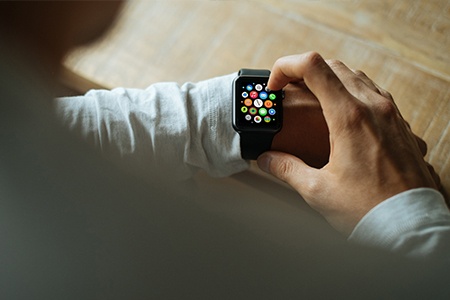Work Smarter, Not Harder With Time Blocking

As the saying goes, we all have the same amount of hours in our day as Beyonce. So why does she have a crazy successful music career, fashion line and Instagram following—all while serving as a loving mother and wife—while you’re stuck trying to get through your workday alive?
We’re betting it’s time blocking. Time blocking is the ultimate productivity hack. Like, if you need one productivity hack in your life and nothing else, this would be it. So, what is time blocking and why have you never heard of it? We’ll tell you. Time blocking—also known as The Pomodoro Technique—is touted as the best tool to prevent burnout. Read on to learn more about time blocking, and how you can use it in your own daily life. We can’t promise you’ll hit it as big as Queen Bey, but you never know!
The Pomodoro Technique
“Work expands so as to fill the time available for its completion” -Parkinson’s Law. This is true for most of us, as we let procrastination paralyze us from completing the day’s to-do list until the time slips away and we’re forced to stressfully throw something together. The Pomodoro Technique understands the human condition, and takes our innate habits into consideration. The technique is simple—use a set amount of time (25 minutes is suggested) to complete a task. Once the task is completed and the timer dings, schedule a set amount of time for a break and then repeat the cycle. You can shift the allotted times for break and work, as many claim that science denotes 52 minutes of work paired with a 17-minute break as optimal.
Why does this technique work so well?
- It eliminates distractions: When your timer is set, you know you’re in work mode. Knowing you have a break coming up frees you from the temptations of toggling browser tabs or mindlessly scrolling through social media.
- It gives you smaller goals to accomplish: Smaller goals are easier to digest and complete. Breaking your day up to tackle one thing at a time allows your brain to focus on a deeper level and increases moments of accomplishment once you check them off.
- It rewards you for getting things done: Like knowing chocolate cake comes after brussel sprouts, having a break to look forward to is extremely gratifying. The more you get done, the more breaks you can then take!
- It gives your brain a rest: Without scheduling breaks, it can be all too easy to work straight through lunch and be completely braindead by 3 pm. “All efforts to control behavior, to perform and to focus draw on that pool of psychological energy. Once that energy is depleted, we become less effective at everything we do,” says John Trougakos, associate professor of Organizational Behavior & HR Management at the University of Toronto.
Find What Works Best For You
To successfully begin incorporating this technique into your daily life, it’s important to start your day with a little planning. Remember, the 52-17 minute formula might not be your ideal schedule for work and breaks. Test out a few different schedules to find which maximizes your productivity.
Another key to making this method working from you? Stepping away from the computer during your breaks. Have a quick in-person chat with a co-worker, take a walk around, paint your nails… do anything to get up and moving. Your goal is to give your mind a chance to recover from information overload.
Even More Productivity Tools
Interested in more tools that will help your productivity skyrocket? GetAssist is a new app that helps people connect with purpose via social media. There’s no larger timesuck than social media—Long strings of Twitter updates are impossible to keep up with, and sifting through clogged Facebook newsfeeds incites immediate agitation nowadays. On GetAssist you can completely manage what you want to see and what you don’t—ensuring you’ll get access to the information you actually want to see quicker than ever. GetAssist also features a robust business community where you can request help with everything from painting the nursery to fixing the A/C in mere minutes.















